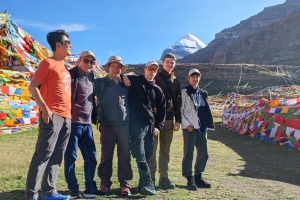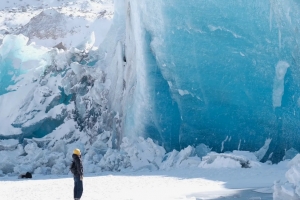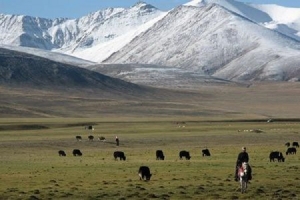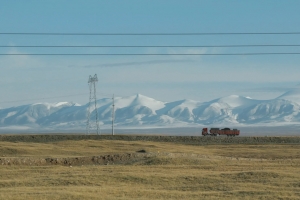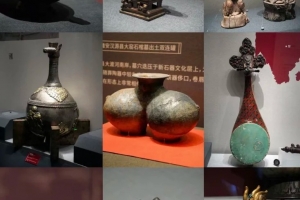Shigatse, also known as Xigatse, Xigaze, or Rikaze, is a vibrant city steeped in history, culture, and breathtaking natural beauty. As the second largest city in Tibet and the capital of the Tsang province, Shigatse stands as a gateway to ancient traditions and modern connectivity. This comprehensive guide will walk you through everything you need to know about Shigatse—from its strategic location and unique geography to its historical landmarks and travel tips. Whether you’re exploring a Shigatse Map for navigation, curious about its lofty Shigatse altitude, or planning your journey from Shigatse to Lhasa, this article provides a detailed.
A Glimpse into Shigatse’s History and Culture
Shigatse has long been an epicenter of Tibetan culture and politics. Historically, it has served as the commercial and political hub of the Tsang region, a testament to its longstanding importance. The city’s heritage is woven into the fabric of Tibetan civilization, with ancient fortifications, palaces, and monasteries that narrate the tales of past glory.
One of the most prominent aspects of Shigatse’s historical significance is its association with the Panchen Lama. The Tashi Lhunpo Monastery, established centuries ago, has been the official seat of the Panchen Lamas—the second most influential religious figure in Tibetan Buddhism after the Dalai Lama. This deep-rooted religious tradition has played a crucial role in shaping not only the spiritual life of Shigatse but also its social and political dynamics.
Furthermore, Shigatse’s historical landscape was once dominated by a massive fort or dzong that exemplified Tibetan architectural ingenuity. Although much of the old fort was destroyed over time, its legacy lives on in the city’s cultural memory, symbolizing the power and resilience of Tibetan dynasties during the 16th and 17th centuries.
Today, Shigatse continues to honor its past while embracing modernity. Visitors can explore remnants of its ancient history alongside contemporary amenities, making it a unique destination where tradition and progress coexist harmoniously.
Geographical Location and Shigatse Map Insights

Shigatse Map
Located in the southwest of Tibet, Shigatse is nestled on the south bank of the mighty Brahmaputra River. A careful look at a Shigatse Map reveals its strategic position as a vital crossroad connecting various parts of Tibet. Shigatse lies approximately 250 km from Lhasa via the Friendship Highway—a journey that not only serves as a route for travelers but also as a scenic drive through the rugged Tibetan landscape.
Geographically, Shigatse is positioned where the Nyang Chu River meets the Brahmaputra, creating a unique confluence that has historically been of strategic importance. The city’s placement has made it a crucial stop for trade caravans and a pivotal administrative center for the region.
In addition to its commercial relevance, Shigatse’s location offers travelers breathtaking views of the surrounding mountains and vast valleys. The scenic beauty evident on a Shigatse Map provides hints of the city’s topographical marvels—from snow-capped peaks to expansive grasslands, every turn offers a new perspective of Tibetan nature.
The region’s strategic location has also been instrumental in shaping its socio-economic landscape. For centuries, Shigatse has been a meeting point for diverse cultural exchanges, serving as a melting pot where traditional Tibetan customs blend with influences from neighboring regions.
The Unique Altitude of Shigatse
One of the most notable physical characteristics of Shigatse is its impressive elevation. With a Shigatse altitude of approximately 3,900 meters (12,800 feet) above sea level, the city offers a high-altitude experience that is both challenging and enchanting. This lofty elevation not only contributes to the city’s dramatic landscapes but also plays a significant role in its climate and weather patterns.
At this high altitude, visitors often experience thinner air and a cooler climate, especially in the evenings and early mornings. The elevation contributes to the distinct weather patterns observed in the region, making it essential for travelers to acclimatize and prepare accordingly. While the altitude can pose challenges for some, it also provides unparalleled opportunities for breathtaking panoramic views and unique highland adventures.
For those planning outdoor activities, understanding the Shigatse altitude is crucial. The high elevation can lead to rapid changes in weather, and visitors are advised to carry adequate clothing and protective gear. Whether you’re trekking through the rugged terrain or simply exploring the city’s historical sites, the high altitude adds an extra dimension to the overall experience of Shigatse.
Shigatse Population and Society
With a Shigatse Population of around 870,700 people, the city stands as a bustling metropolis in the heart of Tibet. This significant population size reflects Shigatse’s role as a major urban center and administrative hub in the Tsang region. The city is not only a center of commerce and governance but also a vibrant community where ancient traditions and modern lifestyles intersect.
The diverse population of Shigatse contributes to a rich cultural tapestry, with residents maintaining long-held customs while adapting to contemporary influences. The local society is known for its warmth and hospitality, offering visitors an authentic glimpse into Tibetan life. Local markets, festivals, and cultural events provide ample opportunities for cultural immersion and interaction with the people of Shigatse.
Social structures in Shigatse are deeply intertwined with Tibetan Buddhism. The presence of significant religious institutions like the Tashi Lhunpo Monastery plays an integral role in community life, fostering a sense of identity and continuity. The population of Shigatse, with its blend of tradition and modernity, embodies the spirit of Tibet—a land of resilience, spirituality, and profound beauty.
As the city continues to grow and evolve, its population remains a testament to its enduring legacy as a cultural and political center. The dynamic mix of urban development and traditional lifestyles makes Shigatse a fascinating case study of how ancient heritage can thrive in a modern world.
Traveling to Shigatse: Routes from Lhasa and Beyond

Shigatse Road Map
One of the key aspects that makes Shigatse accessible and popular among travelers is its excellent connectivity with Lhasa and other major cities in China. Whether you are planning to travel Shigatse to Lhasa by road, rail, or air, there are several convenient options to consider.
By Air
Shigatse is served by an airport that connects it with major Chinese cities such as Xi’an and Chengdu. Direct flights ensure a swift and comfortable journey, making air travel a preferred choice for those who want to bypass the long journey on winding roads. The airport not only caters to tourists but also supports local commerce, contributing to the overall growth of the region.
By Train
For a more scenic and relaxed travel experience, the train journey from Lhasa to Shigatse is an excellent option. With the opening of the new railway station in 2016, travelers can now enjoy a 4-hour ride on a train that connects these two historic cities. The train journey provides an immersive experience of Tibet’s varied landscapes, offering glimpses of vast plateaus, deep valleys, and charming rural settlements. Given that the Tibet-Qinghai railway connects Lhasa with many large cities in China, the train to Shigatse is a convenient link for international visitors who want to explore Tibet’s interior.
By Road
Most travelers arrive in Lhasa first and then continue their journey by road to Shigatse. The road distance is approximately 250 km, and the drive is made all the more memorable by the striking scenery along the Friendship Highway. This route not only offers stunning views but also provides an opportunity to experience the local lifestyle as you pass through small towns and remote villages.
The Stopover to the Everest Region
Shigatse is traditionally a stopover point for travelers heading toward the Everest Region. From Shigatse, the journey continues to other notable destinations such as Shegar, Tingri, and Mount Everest Base Camp. Additionally, the road extends toward Gyirong, marking the newly opened border crossing between Tibet and Nepal. This strategic connectivity makes Shigatse an essential hub for adventurers and pilgrims alike.
When planning your trip, it is important to consider the weather and altitude. Preparation is key to ensuring a comfortable journey, whether you are catching a flight, boarding a train, or driving along the rugged mountain roads. The accessibility from Shigatse to Lhasa enhances the overall travel experience, allowing you to immerse yourself in the cultural and natural wonders of Tibet.
Exploring the Weather of Shigatse
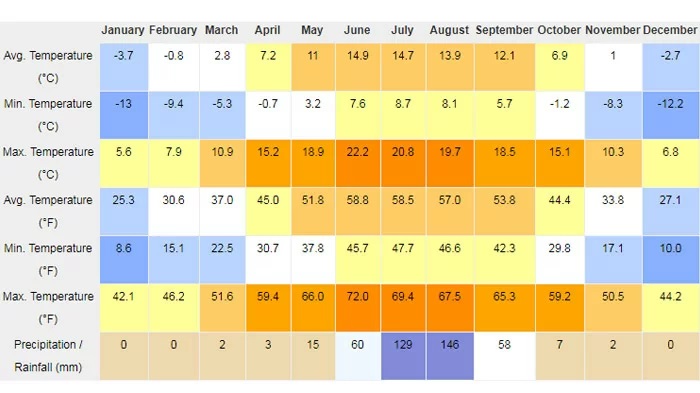
Weather of Shigatse
The climate of Shigatse is an integral part of its allure, influencing everything from local life to outdoor adventures. The Shigatse weather is characterized by a dry climate punctuated by a short rainy season, making it distinct from many other regions in Tibet.
Seasonal Variations of Shigatse
- Spring and Autumn: During these transitional seasons, the weather in Shigatse is typically mild and pleasant. Temperatures are comfortable, and the skies are often clear—ideal conditions for sightseeing and exploring the city’s historical landmarks.
- Summer: From April to October, summer in Shigatse is marked by warm days and cool nights. However, the temperature differences can be significant. Daytime temperatures rise due to strong solar radiation, while nights can be surprisingly chilly. Visitors are advised to dress in layers and bring essentials like sunscreen, sunglasses, and a hat to protect against the intense sun.
- Rainy Season: The monsoon influences the region during July and August, leading to occasional rainfall. Although the rains primarily occur at night, the weather can be unpredictable. Travelers who plan to visit during this period should prepare for sudden showers and possibly overcast conditions.
- Winter: The winter months bring colder temperatures, and while snowfall is not as frequent as in other high-altitude regions, the cold is palpable. The crisp, clear winter days offer excellent conditions for photography and enjoying the stark, beautiful landscape.
Practical Tips for Shigatse Travelers
Understanding the Shigatse weather is essential for planning your visit. The following tips will help ensure a comfortable and safe experience:
- Layering is Key: Due to significant temperature variations between day and night, packing layers is essential. A combination of thermal wear, sweaters, and a reliable jacket will help you adapt to changing conditions.
- Sun Protection: With the high altitude comes strong ultraviolet radiation. Be sure to carry sunscreen, sunglasses, and a hat to protect your skin and eyes.
- Weather-Resistant Gear: Especially during the rainy season, waterproof clothing and sturdy shoes will ensure that you remain comfortable while exploring the city and its surroundings.
- Monitor Weather Forecasts: Local forecasts can help you plan your daily activities more effectively. Whether you’re heading out on a guided tour or exploring on your own, staying informed about the Shigatse weather will enhance your overall experience.
The distinctive climate of Shigatse adds to the charm of this ancient city, making each visit a unique adventure into the heart of Tibet’s high-altitude environment.
Iconic Attractions and Monasteries in Shigatse
Shigatse is a treasure trove of historical and cultural attractions that offer insights into Tibetan heritage. Among its many landmarks, the monasteries stand out as symbols of spiritual legacy and architectural brilliance.
Tashi Lhunpo Monastery
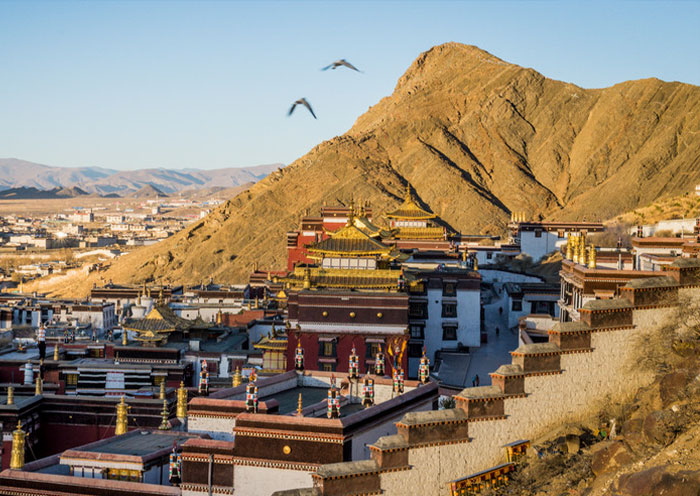
Tashi Lhunpo Monastery
Arguably the crown jewel of Shigatse, Tashi Lhunpo Monastery is one of Tibet’s most revered religious institutions. Founded in the 15th century, this monastery serves as the traditional seat of the Panchen Lama—the second most important figure in Tibetan Buddhism. The sprawling complex is not only an architectural marvel but also a vibrant center of spiritual practice. Visitors can witness intricate murals, sacred relics, and a serene ambiance that reflects centuries of Buddhist tradition.
Shalu Monastery
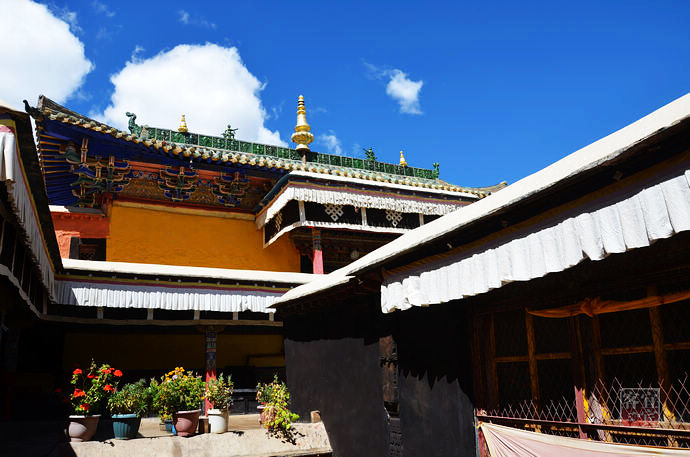
Shalu Monastery
Located just a short ride from Shigatse, Shalu Monastery is an 11th-century gem renowned for its exquisite 14th-century murals. This small yet significant monastery is a fascinating blend of Tibetan and Chinese architectural styles. Shalu’s historical library, established by Abbott Buton Rinchendrub, played a pivotal role in the translation and preservation of numerous Tibetan manuscripts. Today, the monastery remains an influential center for Tibetan Buddhism and a must-visit for those interested in art, history, and religious studies.
Sakya Monastery
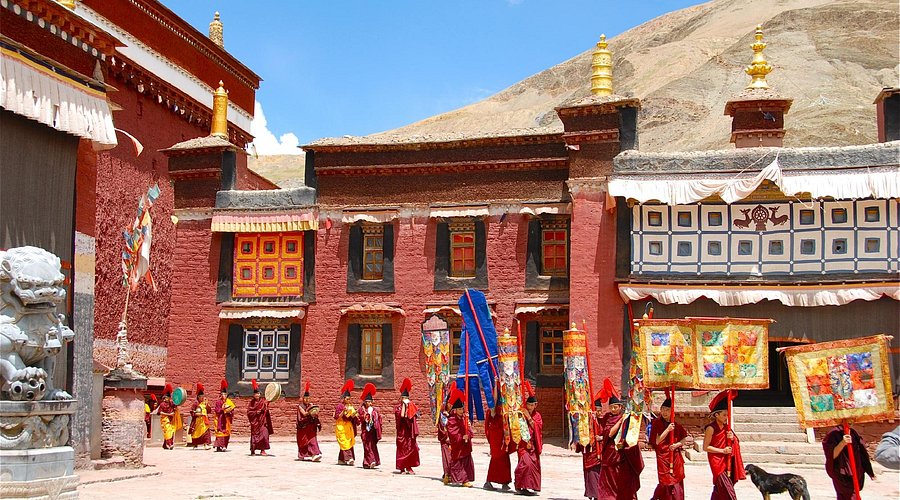
Sakya Monastery
Situated approximately 160 km southwest of Shigatse on the way to Tingri, Sakya Monastery is another iconic destination that captivates visitors with its serene beauty and historical importance. The monastery complex is uniquely divided by the Trum-chu River, with sections on both a hillside and the valley below. As a prominent center of the Sakyapa school of Tibetan Buddhism, Sakya Monastery offers a peaceful retreat where history, spirituality, and natural beauty converge.
Other Noteworthy Attractions
In addition to these major monasteries, Shigatse and its surrounding region are dotted with ancient forts, palaces, and temples. The remnants of the old dzong, though largely replaced by a newer castle, still echo the grandeur of bygone eras. Walking through the streets of Shigatse, you can sense the layers of history—from the bustling markets that once served as trading hubs to the quiet corners where tradition has remained undisturbed by modernity.
Each of these attractions contributes to the rich tapestry of Shigatse’s cultural heritage, offering visitors a deep dive into Tibetan spirituality, art, and history.
Accommodation and Hospitality in Shigatse

Shigatse Hilton Hotel
Given its strategic location along major transportation routes, Shigatse has evolved into a key stopover for travelers exploring Tibet. The city offers a diverse range of accommodations that cater to various budgets and preferences, ensuring that every visitor finds a comfortable place to rest.
- Budget-Friendly Hotels: For travelers looking for basic amenities without compromising on comfort, Shigatse has numerous 3-star hotels that provide essentials like hot showers, Wi-Fi, and complimentary breakfast. These establishments are ideal for short stays or as a resting point during longer journeys.
- Mid-Range Accommodations: Many tour groups and individual travelers opt for mid-range hotels such as the Gesar Hotel. These establishments strike a balance between affordability and quality, offering comfortable rooms, modern facilities, and friendly service.
- Luxury Stays: For those who prefer a more upscale experience, high-end 5-star hotels are available. These luxurious accommodations offer top-notch amenities, fine dining experiences, and exceptional service, ensuring a memorable stay in the heart of Tibet.
Experiencing Local Cuisine and Cultural Activities
No journey to Shigatse is complete without immersing yourself in the local cuisine and cultural activities that define this ancient city. Tibetan culinary traditions are as rich and varied as the region’s history, offering a feast for both the senses and the soul.
Traditional Tibetan Cuisine

Tibetan Hot Pot
The cuisine in Shigatse is a reflection of its high-altitude environment and cultural heritage. Staple dishes such as tsampa (roasted barley flour), momo (Tibetan dumplings), and hearty soups are common. These dishes, often accompanied by butter tea—a unique blend of tea, yak butter, and salt—provide nourishment and warmth in the cool, high-altitude climate.
Local eateries in Shigatse offer both traditional Tibetan fare and modern interpretations of classic dishes, ensuring that every palate is catered to. Whether dining in a local restaurant or sampling street food at bustling markets, you’ll discover flavors that are as diverse as they are memorable.
Cultural Festivals and Traditional Performances
Shigatse is not just about food; it is also a hub for cultural festivities and traditional performances. Throughout the year, the city hosts a variety of festivals that celebrate Tibetan art, music, and dance. These events provide an immersive experience into the rich cultural tapestry of the region, allowing visitors to witness ancient rituals, vibrant costumes, and age-old traditions that have been passed down through generations.
Handicrafts and Souvenirs
For those looking to take a piece of Tibetan culture home, Shigatse’s local markets are brimming with handicrafts, traditional garments, and intricate jewelry. These authentic souvenirs are a testament to the city’s rich artistic heritage and make for perfect mementos of your journey through Shigatse Tibet.
Outdoor Adventures and Scenic Landscapes
Beyond its urban attractions, Shigatse offers abundant opportunities for outdoor enthusiasts. The surrounding landscapes are characterized by rugged mountains, verdant valleys, and expansive plains that offer endless possibilities for adventure and exploration.
Trekking and Hiking
The high-altitude environment of Shigatse provides a stunning backdrop for trekking and hiking. Trails in and around the city take you through remote villages, ancient ruins, and awe-inspiring natural vistas. Whether you’re an experienced trekker or a casual hiker, the varied terrain allows for excursions that cater to all levels of fitness and adventure.
Photography and Scenic Drives
The picturesque scenery of Shigatse is a dream come true for photographers and nature lovers. The dramatic landscapes—ranging from snow-capped peaks to the serene flow of the Brahmaputra—offer countless opportunities for capturing breathtaking images. A drive along the Friendship Highway, especially during sunrise or sunset, reveals a tapestry of colors and contrasts that perfectly encapsulate the spirit of Tibet.
Wildlife and Natural Reserves
The ecosystems around Shigatse are home to a variety of flora and fauna adapted to the high-altitude environment. Nature reserves and protected areas in the region offer a glimpse into the biodiversity of Tibet. Birdwatchers, in particular, can delight in spotting rare species that inhabit the rugged terrains and wetlands.
For adventurers, the journey beyond Shigatse is just as compelling. Routes leading toward the Everest Region, Tingri, and even the border with Nepal open up a world of exploration that extends far beyond the city limits.
Shigatse – A Journey into the Soul of Tibet
Shigatse is much more than a destination; it is an experience that encapsulates the spirit of Tibet. From its historical landmarks and religious sanctuaries to its bustling markets and modern amenities, the city offers an unforgettable blend of tradition and innovation. Whether you are studying a Shigatse Map to navigate its ancient streets, marveling at the high Shigatse altitude, or planning your route Shigatse to Lhasa along scenic roads, every facet of this city tells a story.
- Historical and Cultural Hub: As the former seat of the Kings of Tsang and the spiritual home of the Panchen Lama, Shigatse is deeply entrenched in Tibetan history.
- Strategic Location: Located on the banks of the Brahmaputra and connected by well-established transport routes, Shigatse is a critical hub for commerce, travel, and cultural exchange in Shigatse Tibet.
- High Altitude Living: At an altitude of 3,900 meters, the city offers a unique highland experience with distinct weather patterns, requiring visitors to prepare accordingly.
- Accessible Connectivity: Whether arriving by air, train, or road, the journey from Shigatse to Lhasa is seamless and scenic, offering travelers a glimpse into the diverse landscapes of Tibet.
- Vibrant Local Life: With a population of approximately 870,700, Shigatse is a dynamic city where modernity meets tradition, and every street corner offers a story waiting to be discovered.
- Diverse Experiences: From exploring ancient monasteries like Tashi Lhunpo and Shalu to embarking on trekking adventures in the surrounding wilderness, Shigatse caters to a wide range of interests and passions.
For those planning a visit, Shigatse invites you to experience its unique blend of history, spirituality, and natural beauty. Whether you’re a seasoned traveler or a curious explorer, this remarkable city promises an enriching journey that transcends the ordinary.
Embark on your adventure to Shigatse and immerse yourself in a world where the past and present converge, creating a living mosaic of Tibetan culture and heritage. Every step you take in this city is a step into the heart of Tibet—a journey that is as transformative as it is unforgettable.
Plan a trip in Shigatse
As you journey through this city, let the ancient chants from the monasteries, the gentle flow of the Brahmaputra, and the vibrant colors of traditional Tibetan attire guide you into a deeper appreciation of a land that has enchanted travelers for centuries. Shigatse is more than a destination—it is a living, breathing museum of Tibetan culture and history, waiting for you to discover its secrets.
Plan your trip, pack your bags, and prepare for an adventure of a lifetime. Whether you travel Shigatse to Lhasa on a train, by car, or even by plane, your journey into the heart of Tibet will leave you with memories that last forever. Contact us, we are a local travel agency in Tibet that has been operating for more than 20 years, providing you with professional Shigatse travel itineraries.


